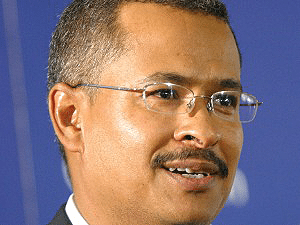
[miningmx.com] – FORGIVE the cynicism, but when the acting head of Business Unity South Africa (Busa) and the outgoing CEO of Eskom commit themselves to finding a long-term solution to the power utility’s woes, one wonders if their pledges carry any meaning, or it’s just a PR exercise.
Eskom has certainly been on the PR trail since March 6 when wet coal supplies to its Kendal station resulted in the loss of about 3,000MW of power and culminated in 12 hours of national load-shedding – the first since January, 2009.
Since then, outgoing Eskom CEO, Brian Dames, has been going around speaking to the South African Chamber of Commerce and Industry, and now Business Unity, drumming up support for the utility’s efforts to keep the lights on, and providing reasons as to why it couldn’t last week.
(To be fair, some four years of relatively uninterrupted power supply, at least to South Africa’s residents, is no mean feat for Dames to have achieved.)
Yet Eskom are in crisis, and despite the PR, the default reaction is secrecy. Details of why wet coal was supplied to Kendal is a confidential matter between Eskom and BHP Billiton whose Khutala colliery in Mpumalanga province provided the coal, even though the consequences were public.
The response from Eskom’s mini-roadshow is how business can assist it in avoiding another load-shedding incident, or as Busa acting CEO Cas Coovadia more chillingly put it yesterday, if load-shedding is to become a feature in the short- to medium-term, what can business do to mitigate it.
Coovadia has called for a unified meeting of top, high-level business minds; and for a national debate where “hard decisions get taken’ and unpalatable truths are faced down. “As business, I don’t believe we’ve had the appropriate response at right levels, on the right issues,’ he said.
“I would like to pull together all of business at the senior level to engage at a senior level to discuss the hard issues, to discuss issues of funding of Eskom, and tariffs,’ he said. “As Busa, we will mobilise that type of team, and hopefully we can get together and identify these hard issues.
“We need a strategic national response in conjunction with our stakeholders,’ he added.
Hang on a second, funding of Eskom?
Yes, said Raymond Parsons, who acts as a consultant to Busa. “We accept that Eskom needs the necessary finance. There’s history to this. The level of tariffs needs to be in context of the overall sustainability of Eskom in order to keep power on.
“We would want to talk about Eskom’s sustainability whether that comes from the fiscus or increased tariffs. Finance is a problem. Opposing tariff increases is not healthy,’ he said.
It’s an odd sort of thing to say because the national debate has already taken place in 2012 and 2013 when business and Eskom engaged with the National Energy Regulator of South Africa (Nersa) to discuss Eskom’s application for a 16% a year increase in the five-year tariff. The decision at the time by the independent regulator was that Eskom could have a 8% tariff.
Busa, however, is giving thought to re-opening the case for a higher tariff as one of several other aspects regarding Eskom such as its sustainability, and the introduction of independent power producers. Whilst the intended response is proactive business thinking, re-opening the tariff debate is puzzling, and perhaps reactionary, panicky almost.
The events that led to the load-shedding on March 6 are rooted in history when the South African government dithered on whether to press ahead with a new power station build programme. Not even the successful commissioning of Medupi’s first unit in December, as planned, would have helped in the current load-shedding crisis.
It would be interesting to know what Eskom’s largest customers think of discussing a higher tariff to Eskom. These are the customers who are a foundation block in Eskom’s revenue. The feeling amongst them was that if they’d accepted a 16% a year increase they wouldn’t have survived the sub-investment grade credit ratings that would have certainly followed.
If anything, restricting the supply of tariff to Eskoms drives the need for a diversity of power supply, as well as the need to unlock of the distribution monopoly, and the liberalisation of the country’s energy sector.











